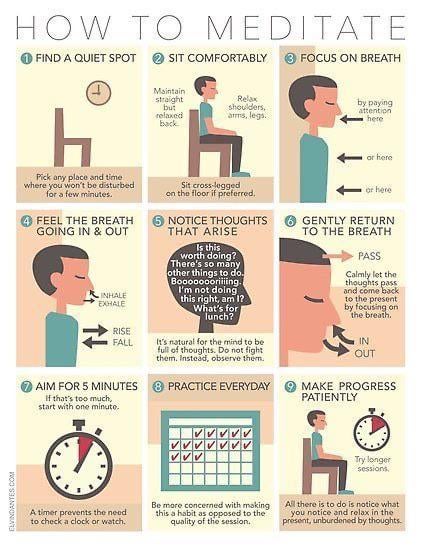
Meditation can be really helpful for reducing stress. But it’s often difficult to get started. I’ve been practicing meditation for over a year, and there are still days when I have trouble sitting quietly without thinking about all the things I should be doing instead. The following is an easy-to-follow guide to help you get started on your journey towards becoming more mindful!
Steps 1-2. Find A Quiet spot and sit comfortably
Find a quiet spot and sit comfortably, preferably on the floor in a cross-legged position. If that’s not possible, you can use a chair or even just sit on the edge of your bed with your legs crossed underneath you. Make sure that whatever position you choose is one in which you will be able to remain alert throughout the meditation session without feeling uncomfortable or restricted. Ensure that there won’t be any distractions during this time; turn off phones, TVs and computers; close blinds or curtains if necessary; don’t eat beforehand (if possible)
Steps 3-5. Focus on the breath going in and out, feel the breath going in and out
Now that you’re focused on your breath, it’s time to deepen and expand your meditation practice. Start by paying attention to the sensation of breathing in and out. You might notice that one side of your body feels warmer than the other, or that there are little noises in the room around you. If your mind wanders away from focusing on the breath–and it will!–just return back to noticing each inhalation and exhalation as best as possible. If at any point during this process, something distracts or distresses you (a noise outside or inside), simply acknowledge it without judgment and return again to focusing on only what is happening right now: breathing in through my nose; feeling my chest rise up with each inhale…
Steps 6-7. Notice thoughts that arise, gently return to the breath
The next step is to notice the thoughts that arise. As you sit in meditation, your mind will wander. This is normal and natural! Don’t judge yourself for having thoughts: just notice them and gently return to the breath. The final step is to enjoy your success! You’ve meditated! Take a moment to congratulate yourself on completing this exercise before moving on with your day.
Steps 8+. Aim for 5 minutes, practice everyday, make progress patiently
So, you’ve made it to the last step! Congratulations on meditating for 3 minutes. Now, what? The next step is to aim for 5 minutes. Once you can do this consistently (for at least one week), then move up to 10 minutes, 15 minutes and so on until your goal is reached or exceeded. Some people find that they can only meditate for short periods at first but then their ability improves over time as they practice more often. Other people find that it takes longer than expected before they can meditate successfully; this is normal too! We all have different brains and bodies which means we all have different experiences when learning something new like meditation… so don’t give up if it doesn’t work immediately–just keep trying.
Meditation is a practice that helps you learn to be more mindful and aware of your emotions, thoughts, and physical sensations. Mindfulness is the act of focusing your attention on the present moment without judgment or criticism. You can be mindful when you’re eating dinner with friends or walking down the street or running errands at work–anytime you notice something happening around you without thinking about what happened earlier in the day or what might happen later today. We hope this guide has helped you learn how to meditate and start practicing. Remember that this is a process, so don’t get discouraged if it doesn’t come easy at first! With practice and patience, however, you will find yourself becoming more mindful of your thoughts and emotions as well as more focused on the present moment–which is exactly what we all need in today’s hectic world.
